 Radio Coverage
Radio Coverage Frequency bands (2G, 3G, 4G) used by operators, during the Mobile Network Benchmarking activity, is presented in Figure 1.

Fig. 1. Frequency bands used by operators
2G/GSM: All three operators used the 900 MHz band. The 1800 MHz band was used by Vip mobile and in a smaller extent by Telenor.
3G/UMTS: All three operators used the 2100 MHz band. The 900 MHz band was used by all three operators, mainly by Telenor which still was using CSFB technology.
4G/LTE: All three operators used the 800 MHz and 1800 MHz bands, additionally 2100MHz was utilized by Telenor, in particular spots. Telekom Srbija and Vip mobile used both bands evenly in all aggregations, while Telenor was using additional 2100MHz band e.g. in Zrenjanin city. All three operators were mainly using LTE 20 MHz bandwidth in Large and Small Cities, while on Roads, LTE 10 MHz bandwidth was mainly utilized.
Carrier Aggregation (CA) usage depends on the network configuration and the amount of data sent during the test. In Large Cities, Telenor had over 40% usage of LTE CA, Telekom Srbija had over 35% and Vip mobile around 24% usage of LTE CA. Usage of LTE CA in Small Cities was much lower than in the Large Cities. In Small Cities, Telenor took the lead with over 30% of LTE CA, Telekom and Vip mobile were almost equal in the LTE CA usage of around 28%. On Roads only Vip mobile had noticeable number of samples with CA, around 14%, Telenor was second with around 12% and Telekom Srbija was last with 7% of LTE CA usage.
Charts with mobile coverage statistics, showing the distribution of radio signal levels for 2G/GSM, 3G/UMTS and 4G/LTE technologies, according to criteria defined by RATEL for the purpose of the Benchmarking campaign, are presented below in Figure 2:
| 2G/GSM signal level | 3G/UMTS signal level | 4G/LTE signal level | |
| Poor | L<-95dBm | L<-105dBm | L<-110dBm |
| Fair | -95dBm ≤ L < - 85dBm | -105dBm ≤ L < -95dBm | -110dBm ≤ L < -100dBm |
| Good | -85dBm ≤ L < -65dBm | -95dBm ≤ L < -65dBm | -100dBm ≤ L < -80dBm |
| Excellent | L ≥ -65dBm | L ≥ -65dBm | L ≥ -80dBm |
2G/GSM network coverage is presented in Figure 3
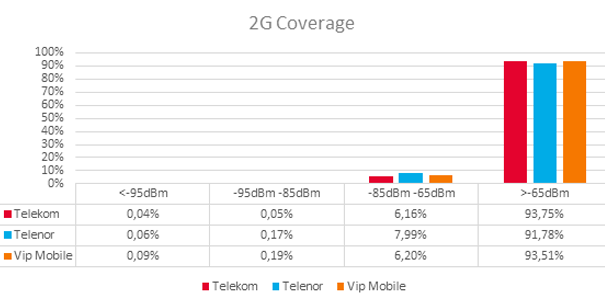
Fig. 3. 2G/GSM coverage
2G/GSM network coverage maps for all three mobile operators are shown in Figure 4.
Telekom Srbija
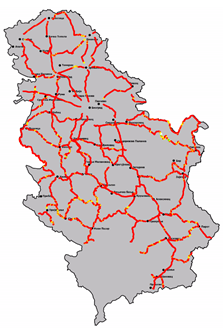
Telenor
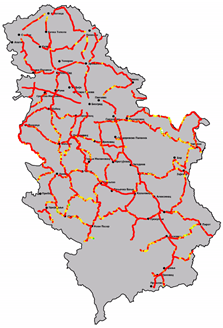
Vip mobile

Fig. 4. 2G/GSM network coverage maps
The best coverage of 2G network was achieved by Telekom Srbija network. Telenor and Vip mobile had slightly worse 2G coverage and lower signal quality, comparing to Telekom Srbija network.
3G/UMTS network coverage is presented in Figure 5.
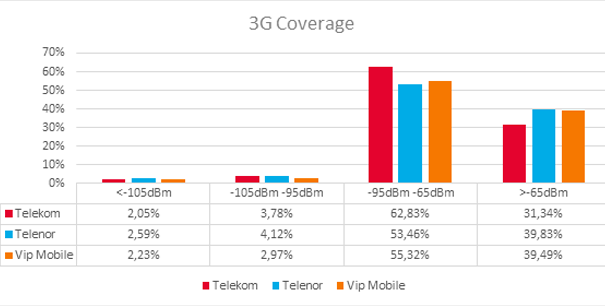
Fig. 5. 3G/UMTS coverage
3G/UMTS network coverage maps for all three mobile operators are shown in Figure 6.
Telekom Srbija

Telenor
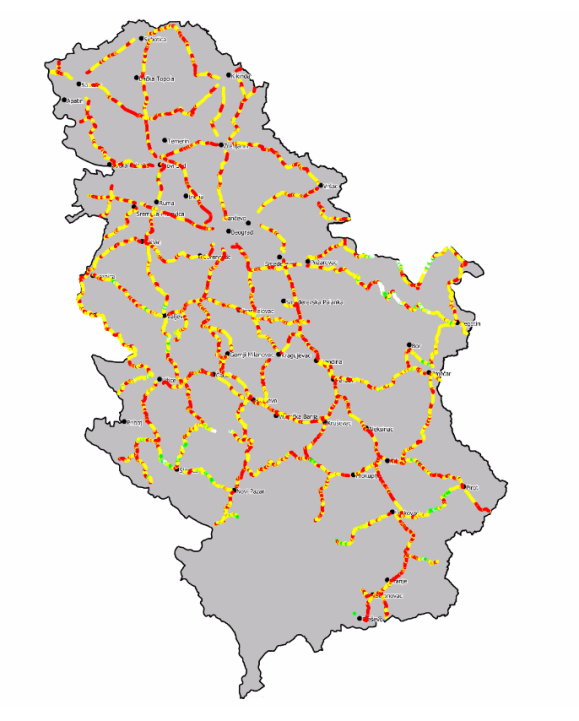
Vip mobile
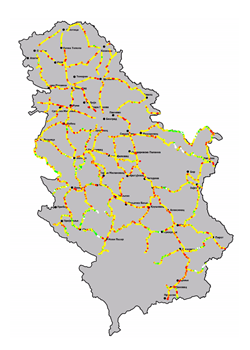
Fig.6. 3G/UMTS network coverage maps
The network with the best 3G coverage was Telenor. This result was caused by the widest UMTS 900 MHz footprint, with a well-developed UMTS 900 MHz coverage outside of cities. Telekom was last, with about 8% less samples in the excellent category than the competition.
4G/LTE network coverage is presented in Figure 7.
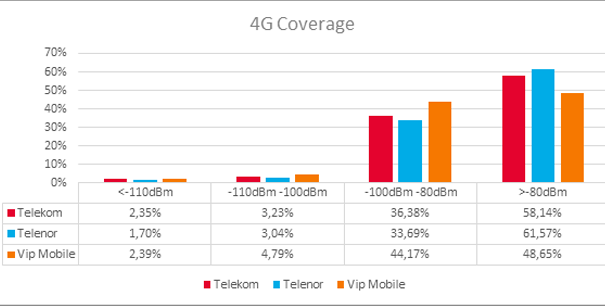
Fig. 7. 4G/LTE network coverage
4G/LTE network coverage maps for all three mobile operators are presented in Figure 8.
Telekom Srbija
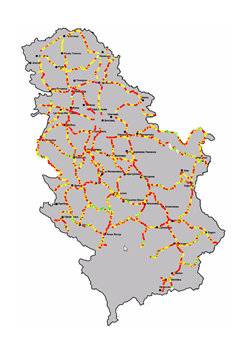
Telenor
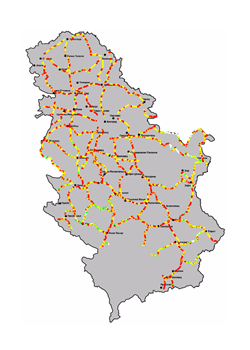
Vip mobile
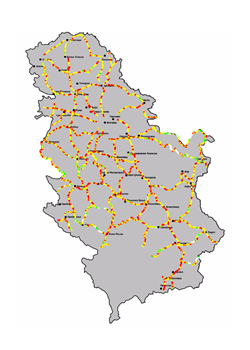
Fig. 8. 4G/LTE network coverage maps
Fig. 8. 4G/LTE network coverage maps
The 4G coverage showed that Telenor was the leader, by having the smallest share of samples with poor 4G signal levels and the highest share of samples with good 4G signal levels. Vip mobile remained behind the two operators, by having the smallest share of the 4G good signal levels and the highest share of poor 4G signal levels